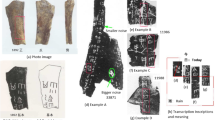Abstract
The CAPTCHA technology can be used to ensure big multimedia data security, which includes CAPTCHA design and CAPTCHA recognition. For the existing methods are difficult to achieve high breaking accuracy for complex handwritten text CAPTCHA, a handwritten CAPTCHA recognizer is proposed, which is a text CAPTCHA breaking method based on style transfer network. Firstly, different from the traditional viewpoints that font structure and font style of characters are inseparable in this field, a new idea of separating font structure and font style of characters is proposed, and it is pointed out that character recognition mainly depends on font structure rather than font style. Secondly, based on this idea, a style transfer network for text CAPTCHA is constructed to convert complex and variable handwritten CAPTCHA into easy-to-recognize printed CAPTCHA. Finally, based on deep convolutional neural network, a text CAPTCHA recognition network is constructed to identify the converted printed CAPTCHAs. With CAPTCHAs from three real websites: eBay, Google and reCAPTCHA, experimental results show that the recognizer has higher breaking accuracy for handwritten CAPTCHA compared with the methods proposed in NDSS’16, CCS’18 and “Science” in 2017.














Similar content being viewed by others
References
Alec R, Metz L, Chintala S (2016) Unsupervised representation learning with deep convolutional generative adversarial networks, arXiv preprint. https://arxiv.org/abs/1511.06434
Brock A, Donahue J, Simonyan K (2019) Large scale GAN training for high fidelity natural image synthesis, In Proceedings of the International Conference on Learning Representations (ICLR). https://openreview.net/pdf?id=B1xsqj09Fm
Bursztein E, Martin M, Mitchell JC (2011) Text-based CAPTCHA strengths and weaknesses, In Proceedings of the ACM Conference on Computer and Communications Security (CCS) 125–137
Chang J, Gu Y, Zhang Y (2017) Chinese typography transfer, arXiv preprint. https://arxiv.org/abs/1707.04904
Frid-Adar M, Diamant I et al (2018) GAN-based synthetic medical image augmentation for increased CNN performance in liver lesion classification. Neurocomputing 321:321–331
Fiot JB, Paucher R (2009) The Captchacker project, Ecole Centrale Paris
Gao H, Wang W, Fan Y (2012) Divide and conquer: An efficient attack on Yahoo! CAPTCHA, In Proceedings of the IEEE International Conference on Trust, Security and Privacy in Computing and Communications (TrustCom) 9–16
Gao H, Yan J et al (2016) A simple generic attack on text CAPTCHAs, In Proceedings of the Network and Distributed System Security Symposium (NDSS) 1–14
George D, Lehrach W et al (2017) A generative vision model that trains with high data efficiency and breaks text-based CAPTCHAs. Science 356(6368):eaag2612
Goodfellow IJ, Bulatov Y et al (2014) Multi-digit number recognition from street view imagery using deep convolutional neural networks, In Proceedings of the International Conference on Learning Representations (ICLR). https://www.researchgate.net/publication/259399973
Goodfellow I, Papernot N, Huang S (2017) Attacking machine learning with adversarial examples, OpenAI. https://blog.openai.com/adversarial-example-research/
Guang Z, Wan Z et al (2020) BlockMaze: an efficient privacy-preserving account-model blockchain based on zk-SNARKs. IEEE Transactions on Dependable and Secure Computing. https://doi.org/10.1109/TDSC.2020.3025129
Han D, Pan N, Li K (2020) A traceable and revocable ciphertext-policy attribute-based encryption scheme based on privacy protection. IEEE Transactions on Dependable and Secure Computing. https://doi.org/10.1109/TDSC.2020.2977646
Huang H, Ma X et al (2021) Unlearnable examples: Making personal data unexploitable. In Proceedings of International Conference on Learning Representations (ICLR) arXiv preprint. https://arxiv.org/abs/2101.04898
Isola P, Zhu J, Zhou T et al (2017) Image-to-image translation with conditional adversarial networks. Proceedings of the IEEE Conference on Computer Vision and Pattern Recognition (CVPR). https://doi.org/10.1109/cvpr.2017.632
Karras T, Laine S, Aila T (2019) A style-based generator architecture for generative adversarial networks, In Proceedings of the IEEE Conference on Computer Vision and Pattern Recognition (CVPR) 4401-4410
Liu T, Wang Y et al (2020) Privacy protection based on stream cipher for spatiotemporal data in IoT. IEEE Internet of Things Journal 7(9):7928–7940
Matan O, Burges CJC et al (1991) Multi-digit recognition using a space displacement neural network, In Proceedings of Advances in Neural Information Processing Systems (NIPS) 488–495
Moy G, Jones N et al (2004) Distortion estimation techniques in solving visual CAPTCHAs, In Proceedings of the IEEE Computer Society Conference on Computer Vision and Pattern Recognition (CVPR) 1123–1128
Pu Y, Xiang T et al (2020) An efficient blockchain-based privacy preserving scheme for vehicular social networks. Inform Sci 540:308–324
Starostenko O, Cruz-Perez C et al (2015) Breaking text-based CAPTCHAs with variable word and character orientation. Patt Recognit 48(4):1097–1108
Von Ahn L, Blum M et al (2003) CAPTCHA: Using hard AI problems for security, In Proceedings of International Conference on the Theory and Applications of Cryptographic Techniques (EUROCRYPT) LNCS 2656:294–311
Yan J, El Ahmad AS (2007) Breaking visual CAPTCHAs with native pattern recognition algorithms, In Proceedings of the Annual Computer Security Applications Conference (ACSAC) 279–291
Yang Y, Deng RH et al (2020) Privacy-preserving medical treatment system through nondeterministic finite automata. IEEE Transactions on Cloud Computing. https://doi.org/10.1109/TCC.2020.2999940
Ye G, Tang Z et al (2018) Yet another text CAPTCHA solver: A generative adversarial network based approach, In Proceedings of the ACM Conference on Computer and Communications Security (CCS) 332–348
Yosinski J, Clune J et al (2014) How transferable are features in deep neural networks? In Proceedings of Advances in Neural Information Processing Systems (NIPS) 3320–3328
Acknowledgements
This work was supported by the National Natural Science Foundation of China (Grant No. U1804263, 62172435) and the Zhongyuan Science and Technology Innovation Leading Talent Project of China (Grant No. 214200510019).
Author information
Authors and Affiliations
Corresponding author
Ethics declarations
Conflict of interest
The authors declare that they have no conflict of interest.
Additional information
Publisher’s Note
Springer Nature remains neutral with regard to jurisdictional claims in published maps and institutional affiliations.
Rights and permissions
About this article
Cite this article
Chen, J., Luo, X., Zhu, L. et al. Handwritten CAPTCHA recognizer: a text CAPTCHA breaking method based on style transfer network. Multimed Tools Appl 82, 13025–13043 (2023). https://doi.org/10.1007/s11042-021-11485-9
Received:
Revised:
Accepted:
Published:
Issue Date:
DOI: https://doi.org/10.1007/s11042-021-11485-9




